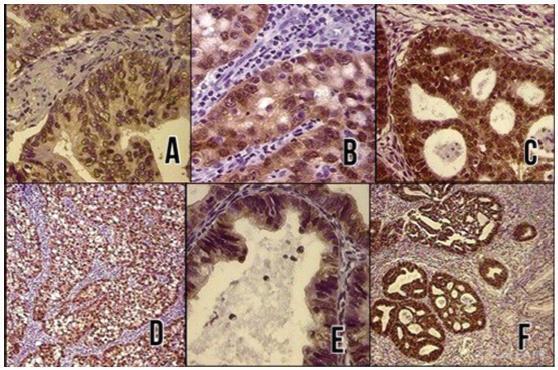Revista Brasileira de Ginecologia e Obstetrícia. 01-01-2017;39(1):21-25

To evaluate the diagnostic utility of the p16ink4a protein expression as a marker for adenocarcinoma of the cervix.
In a cross-sectional study, p16ink4a expression was evaluated in 30 cervical biopsies from patients diagnosed with invasive adenocarcinoma from 2 reference clinics in Brazil, and compared with 18 biopsies of endocervical polyps (control cases). The performance of the tests for p16ink4a was evaluated using a conventional contingency table, and the Kappa (k) index was used to evaluate the agreement of the marker with the tissue diagnosis.
In total, 66% of the invasive adenocarcinoma cases were positive for p16ink4a. All of the adenomatous polyps cases used as negative controls were shown to be negative for p16ink4a. The marker showed a high sensitivity and a high negative predictive value. The Kappa index was good for p16ink4a (k 1/4 0.6).
Considering the strong association between the p16ink4a marker and the cervical adenocarcinoma, its use represents an important tool for reducing incorrect diagnoses of adenocarcinoma and thereby avoiding overtreatment.
Search
Search in:


Comments